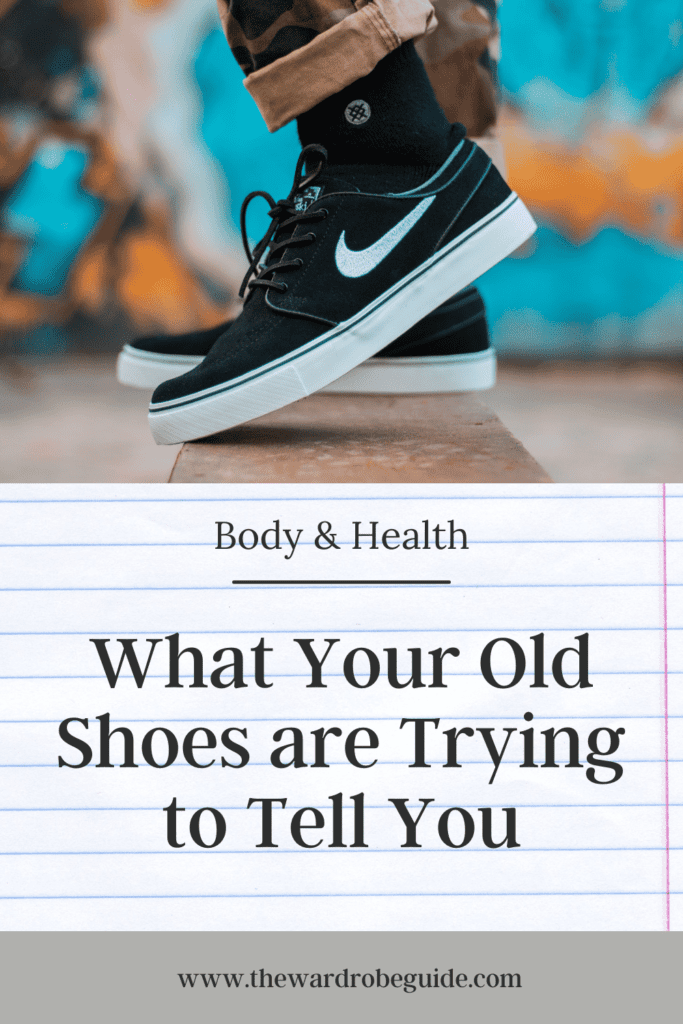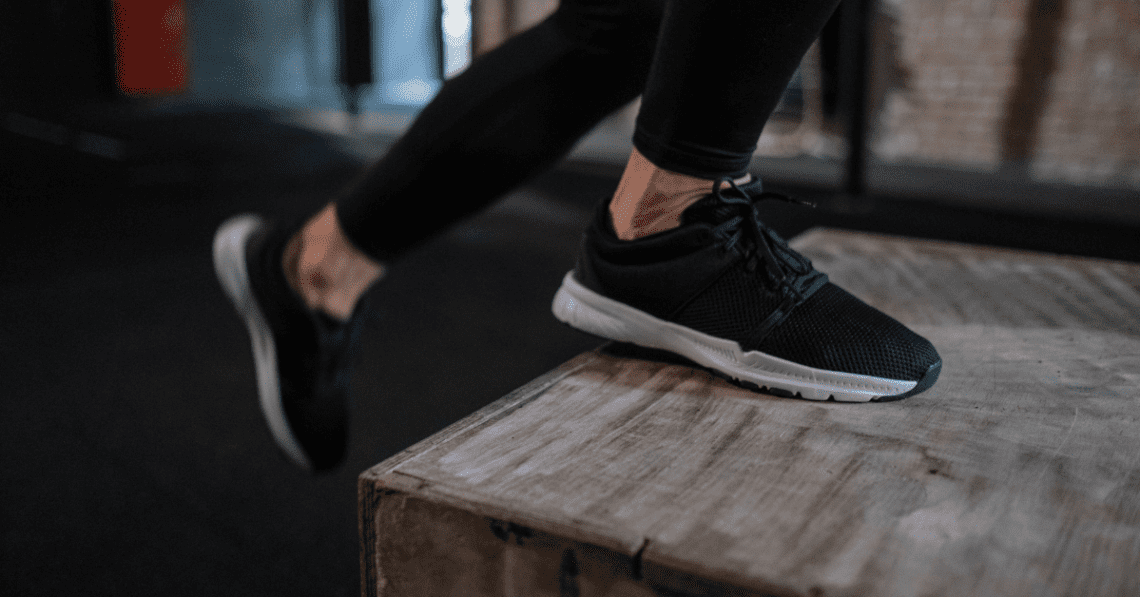We talk about a lot of different tools that are needed to get the job done, but what about the tools needed to get to the job? We at The Wardrobe Guide think the safety and longevity of a Wardrobe Technician are way more important than any single task. Therefore, we think great shoes are the best thing you can invest in at the beginning of your wardrobe career. Here are some tips for when it comes to your work shoes and when to buy new shoes.
Why Are Shoes Important?
When you work in wardrobe, you spend most of the day on your feet. Whether you are dressing and running up and down stairs, stitching and standing at an ironing board, or running to Target to do a return. Further, most theatres tend to have concrete floors, which are extremely hard on your feet and knees.
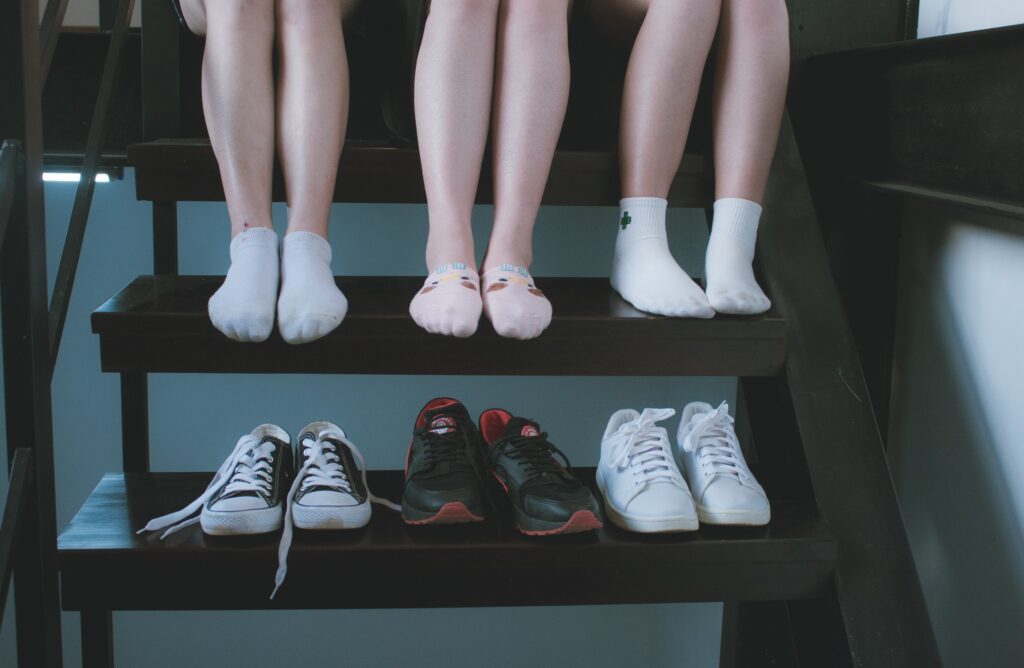
When you spend such a great period of time on your feet, you really need to take care of them. If you don’t take care of your feet, it will affect your knees, and eventually your hips. Pretty soon, running a two-show day could become increasingly difficult as your whole body is thrown out of alignment.
What Are Important Considerations When Buying Shoes?
There are many great shoe brands out there that promise all-day comfort in their sneakers. When buying a shoe for doing wardrobe, typically you are looking for a fairly athletic shoe. If you are dressing, you probably don’t want a heel, and you want something you can move FAST in if needed. At the end of the day, there are a couple of things that you might need to take into consideration when purchasing your new pair of shoes.
1) Your Workplace
Are you a dresser who is wandering the halls of a concrete-floor basement all day? Are you a stitcher who has access to a fatigue mat? Or are you working in a theatre that has a lot of automation happening in a small space? These are some of the questions you should ask yourself to zero in on the comfort/ protection level you are looking for.
2) Your Workplace’s Preferences
Many regional theatres do tend to have rules regarding backstage attire. If you work at a regional theatre, check your contract for any language about what is expected backstage. If there is nothing in the contract, check in with your Supervisor before making any purchases.
Many regional theatres can be very strict about the shoes having to be all-black. Some theatres will go as far as making the backstage personnel put tape over or color in any non-black logos on their shoes. I have also known regional theatres that insist that anyone working backstage has to be wearing steel-toe shoes.
On Broadway, your specific supervisor might have a preference. If you have to go onstage for a change, there might be something specific you will be asked to wear. Otherwise, most shows on Broadway are pretty lenient when it comes to dress codes.
3) Your Body
Just as every theatre is different, everyone’s personal preferences are also varied. Do you have flat feet? Or High Arches? Do you have to wear orthopedic insoles? Is cushion the most important thing to you? Or ankle support? Remember, during a 10 out of 12, you could be expected to be on your feet for up to 14 hours in a day multiple days in a row.
When I was just starting out, I thought looking stylish was the most important thing to me at work. That quickly changed after my first tech week running up and down stairs in Converse all day, when I wasn’t able to walk at the end of the night.
4) Your Wallet
There are some really nice, really comfortable shoes on the market. Some of these shoes can range upwards of $200. If you are working wardrobe at a theatre where that is one week’s paycheck, maybe that isn’t the best shoe for you. Remember, the life cycle of a sneaker is actually quite short, so you need to be able to buy multiple new sneakers a year. Especially if you are wearing them at work every day.
What Are Some Popular Shoe Brands In the Wardrobe Community?
- HOKA
- Cloudflow
- Dansko
- New Balance
- Sketchers
When To Buy New Shoes?
When it comes to your show shoes, one of the most important things to be aware of is the signs that your sneakers are wearing out or dying. Sneakers are actually designed to give the wearer clues as to when they need to be replaced. Generally, be on the lookout for the following:
1) Wrinkles on the midsole
The Midsole is where most of the cushioning in a sneaker is from. When you start to see wrinkles in it, as shown below, it means your shoe is losing the “spring” that once allowed it to bounce back up after being squished with each step.
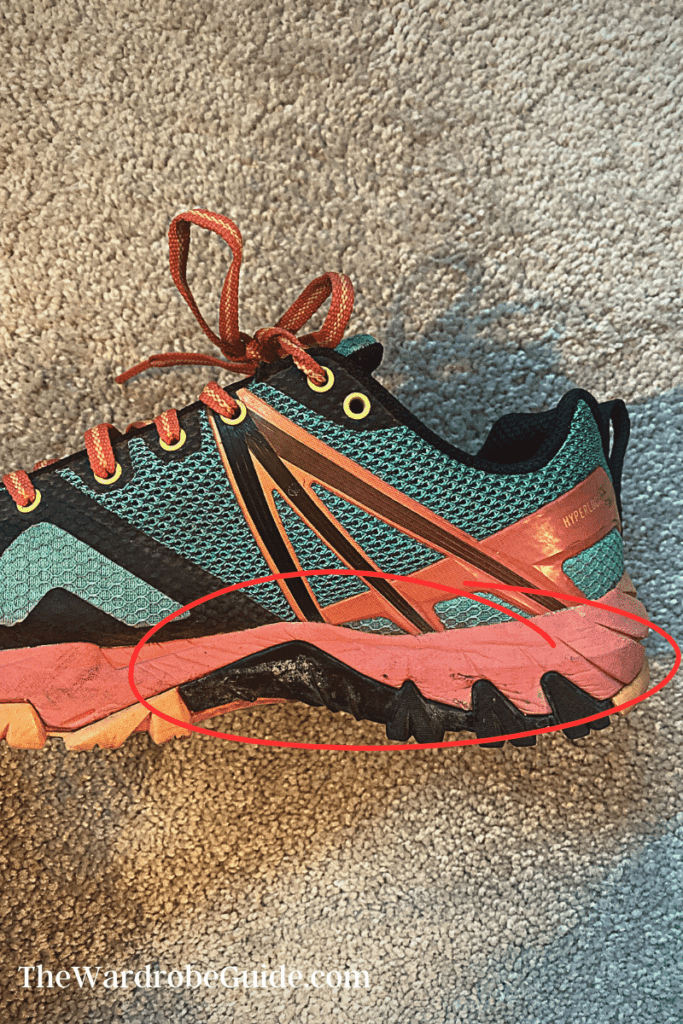
2) A Hole in the Heel
If you are wondering if your shoes are past their prime, check for a hole on the inside of the shoe where your heel rubs, as pictured below.
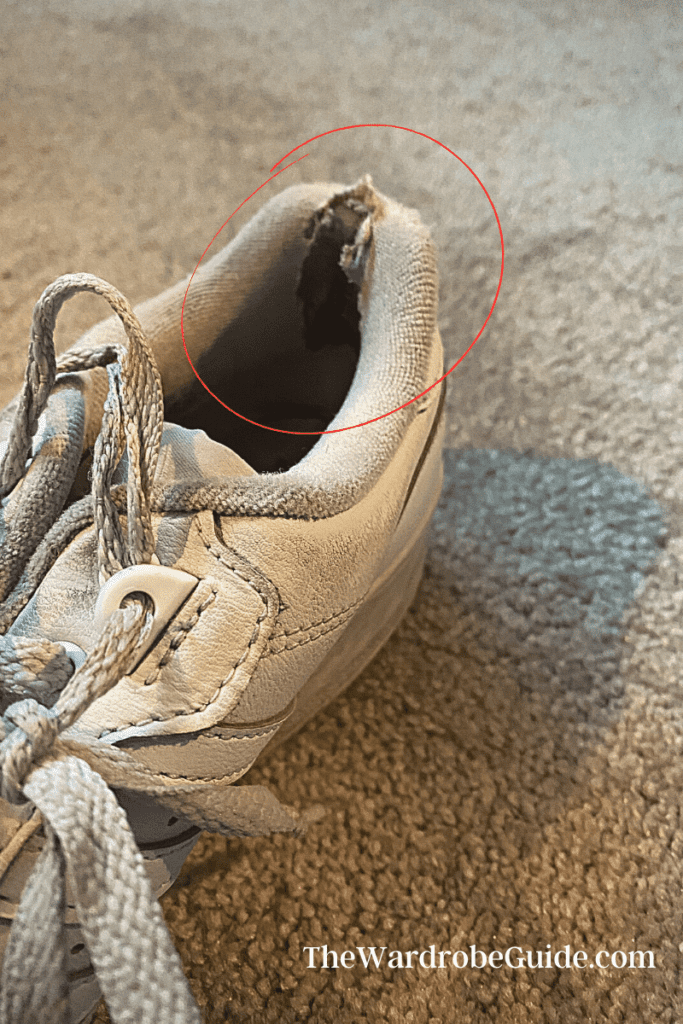
3) The Tread is Gone
A surefire way to know if you need a new pair of shoes is if there are bald patches on the bottom of your sneakers where there once was tread. This is also by design. You wouldn’t keep driving on your tires if there was no tread. The same should go with your shoes. Bonus points if your feet get wet the second the sidewalks are damp with rain. That means you have actually worn a hole through the bottom of your shoe.
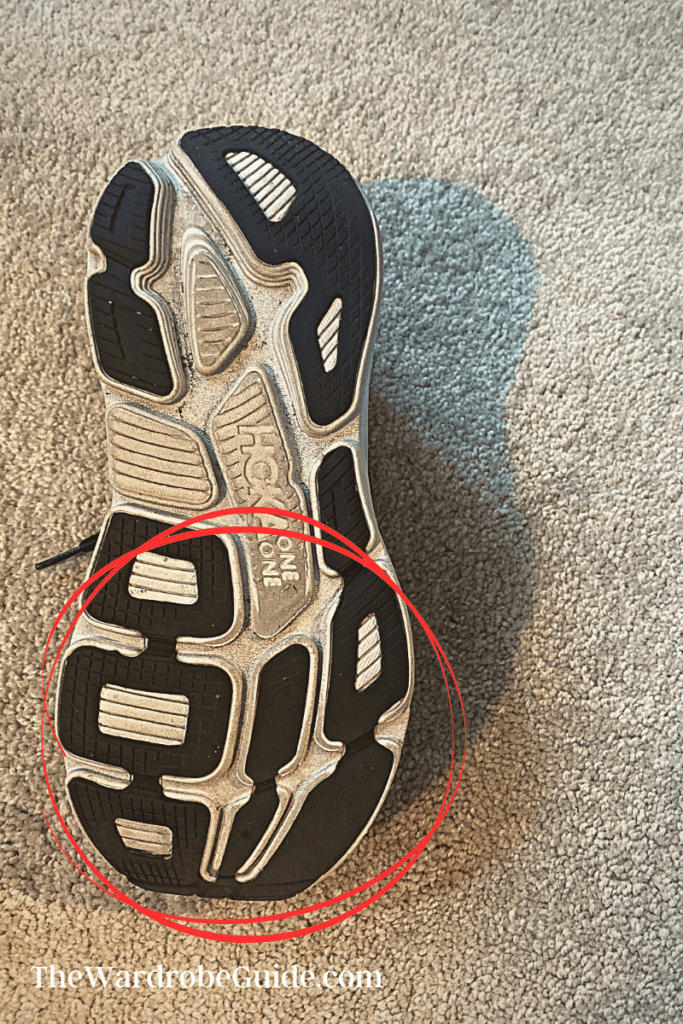
4) Aches and Pains
Is each day getting physically harder for you? Are the stairs becoming more troublesome? Are you coming home each night with achy knees, calves, and arches? That could absolutely be a sign that your shoes have officially worn out.
How Long Should Your New Shoes Last After You Buy Them?
Sneakers are generally made to last about 6 months of “Normal Wear” or 500 miles of walking. Sadly for the wardrobe community, “Normal wear” ends up being only about 30 minutes of walking per day.
This means that for your show running shoes, you could be looking at replacing them approx. every 3-4 months, depending on how intense your work calls are.
What The Wear on Your Old Shoes Is Telling You
You can actually learn quite a bit about your gait by examining one of your old pairs of shoes. If your heels are worn at an angle, it can tell you if you over or under-pronate. You can look at if one shoe is more worn than the other– if you tend to lead with one foot over the other. Are the treads under your toes more worn? Or are you more evenly worn under the ball and heel of your foot? This is all useful information to take with you, especially if you ever decide you need to go to Physical Therapy.
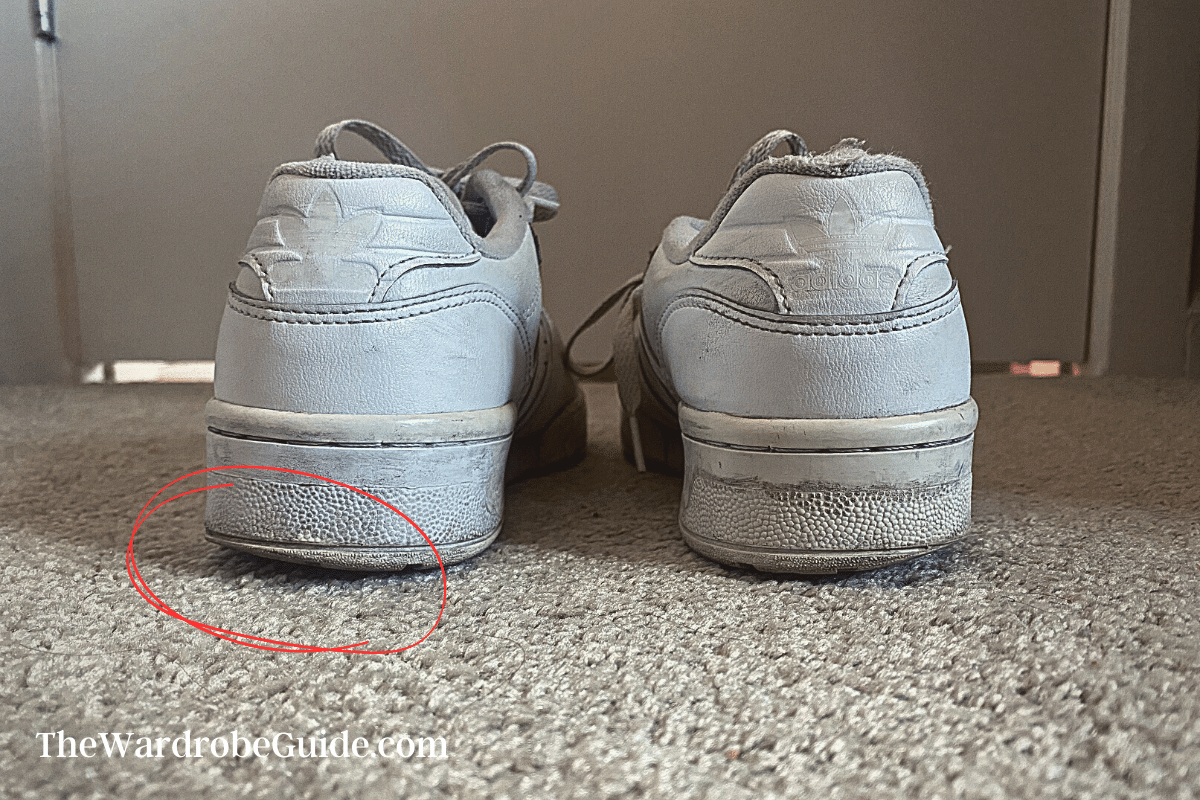
What To Do With your Worn-Out Sneakers
We totally understand that buying 4 pairs of shoes per year might not sound like the most sustainable practice. If you are interested in sustainably putting your old shoes to rest, there are quite a few companies that can help you out. For starters, check out Nike’s sneaker recycling program.
Our Picks of Where to Buy Your Next Work Shoes
When it comes to shoe shopping- especially trying new brands, there are two stores that stand out above the rest.
Zappos
Zappos is great if you need shoes in a hurry. There is a vast selection, and they typically can be delivered to you in a couple of days. Zappos also has a 365-day return policy in case you aren’t satisfied with your new shoes or want to try multiple sizes. Note: Zappos’ return policy details that the shoes should be returned in “unworn” condition.
REI
My #1 choice for shoe shopping. REI really works hard to make sure you are happy and comfortable in your shoes. First, if you can make it to a store, they always have a worker on-site to measure your feet and make sure you are wearing the correct size. (This is really important! The first time I went shoe shopping at REI, I learned I was wearing half a size too small!). The person in the shoe section also takes time with you to find your perfect fit. They are always knowledgeable and happy to help. Then, they encourage you to wear the shoes around to ensure they feel good.
This is where REI’s incredible return policy comes in. Because of their 100% satisfaction guarantee, you can buy the shoes, wear them to work for a couple of weeks, then decide whether you love them or not. If you don’t, you can return them, no questions asked. And before you get nervous about whether or not the moderately used products go to waste– REI has a section of the store where these “used condition” products go to be resold at a discount.
We should note we are not sponsored by/ affiliated with either of these companies. We just really like their shoe-shopping experience.
How often do you replace your shoes each year? And what is your go-to brand? Let us know in the comments or contact us!

